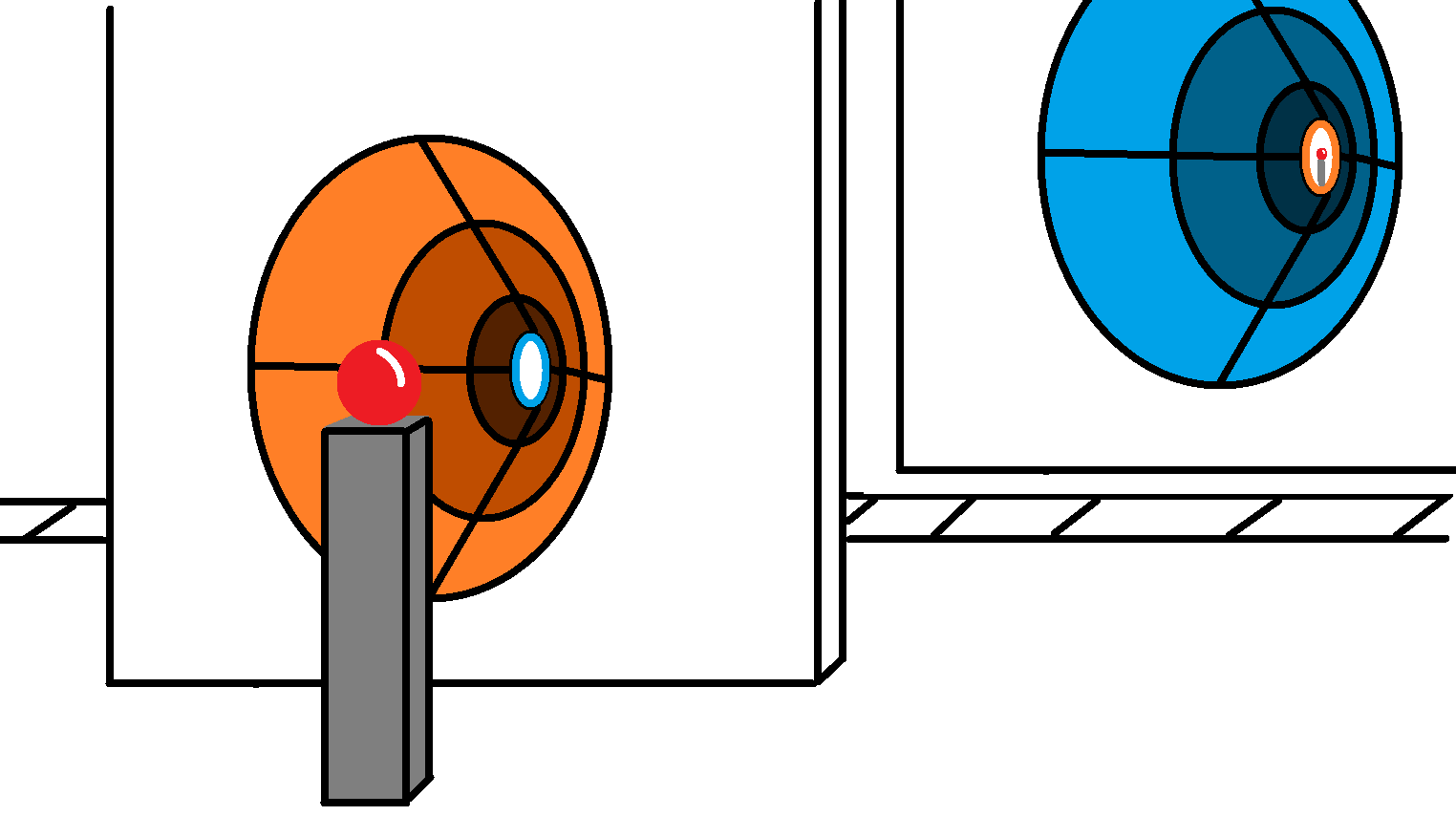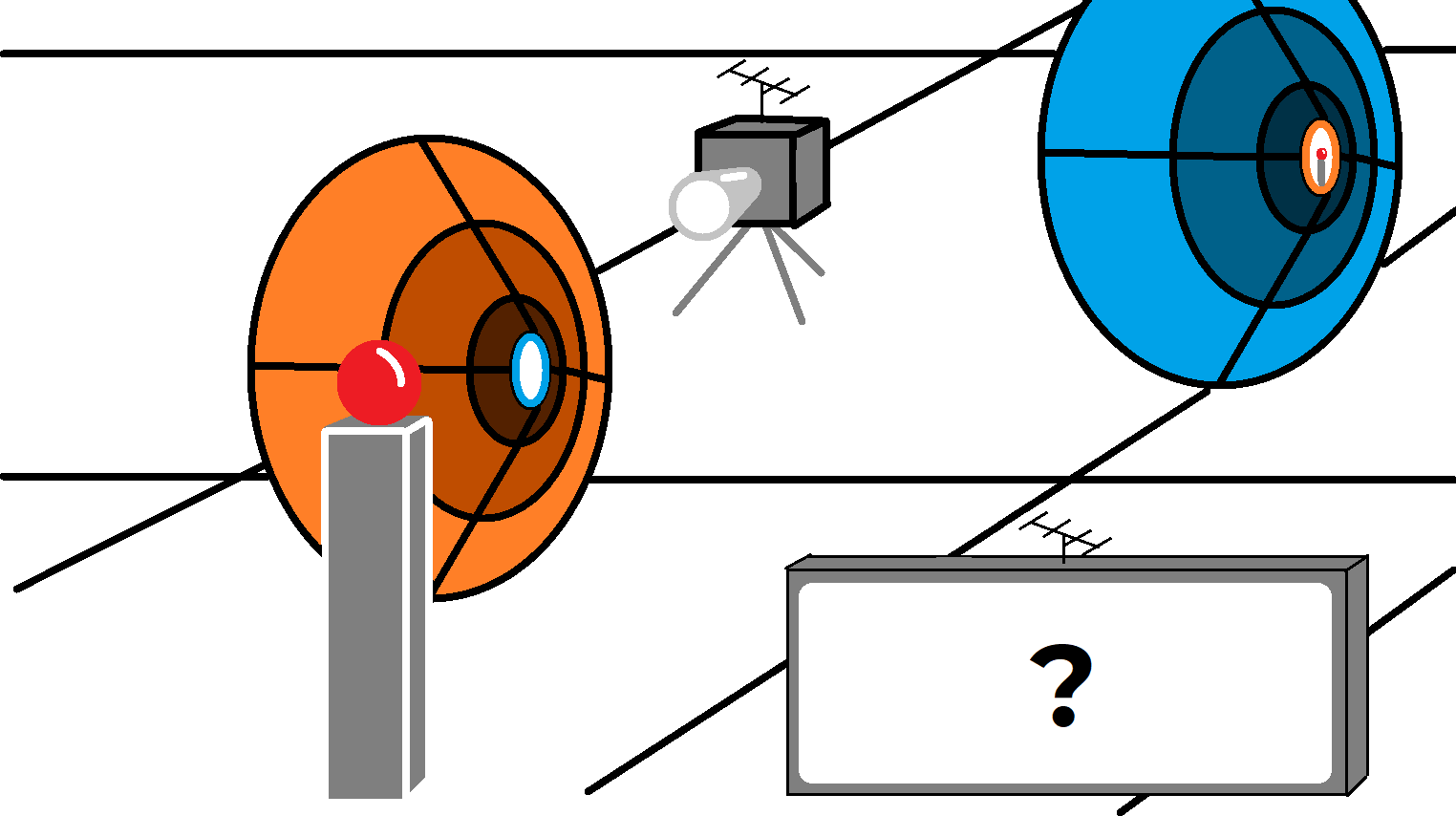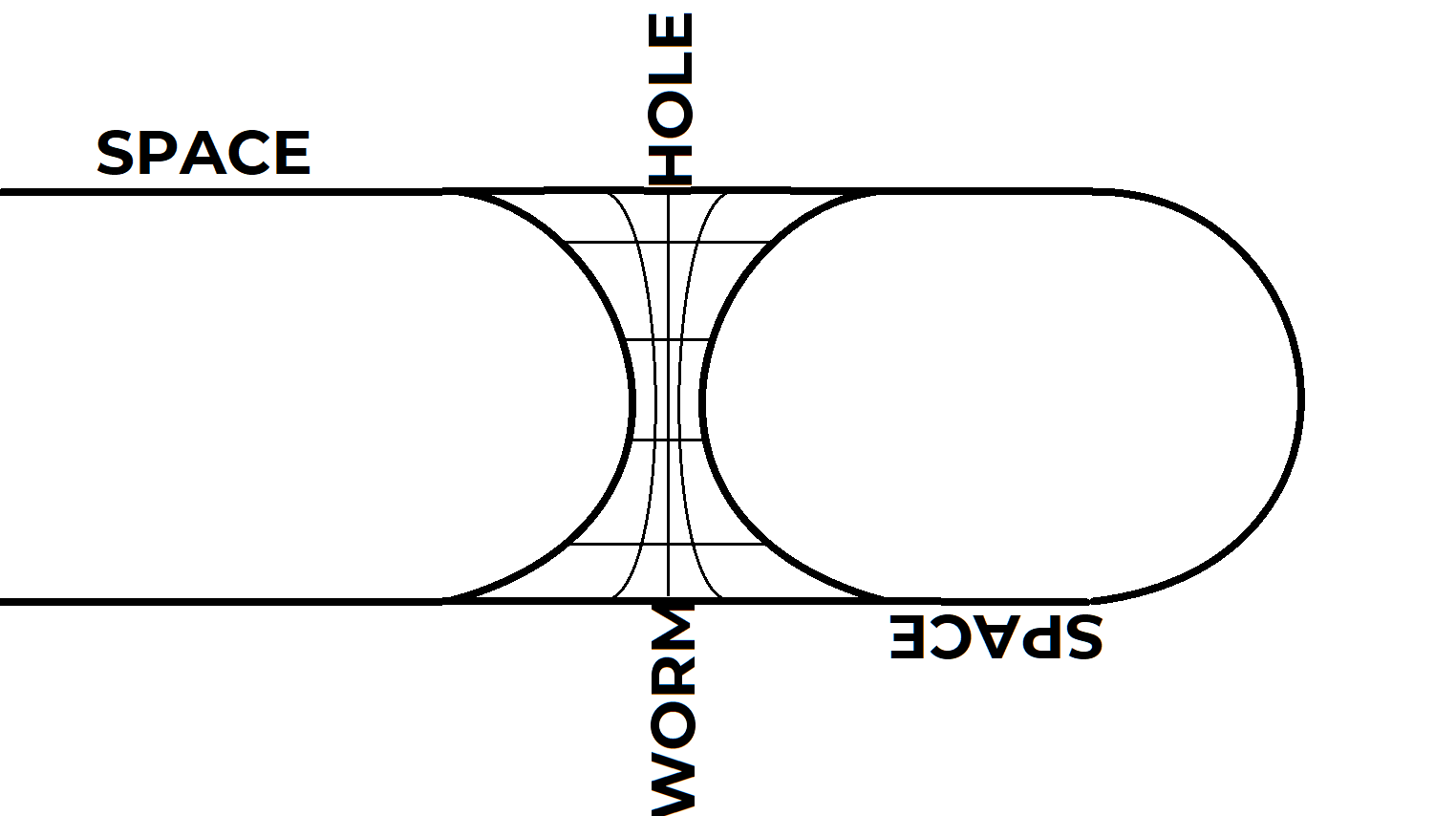Note: A quick disclaimer/"Get-out-of-Jail-free card" is needed here to say that portals (as shown in the paradox) break reality and once you've broken reality once you can break all of it (this is analogous to the principle of explosion, which is itself pretty fun to explore), although it can also be fun to work out how.
The paradox itself doesn't specify the type of portals in use but the choice of this affects the answer hugely. This ambiguity is probably at the core of why these problems do so well. The language is ambiguous but people tend to come out confident in one interpretation on opposite sides which isn't identified until many hours of arguing later. But to understand what people think of when told "portals" we need to look at how they are depicted in the media we consume. Most people are not physicists so they have probably learnt about portals from film and TV. These depictions shape the collective understanding.
Media depictions and the general understanding of portals
The collective image of portals and how they operate in the public consciousness is necessarily influenced by the biggest media using them. E.g. Doctor Who, Marvel, Stargate, Star Trek, His Dark Materials (sort of...), and of course, Valve's Portal franchise. In fact, Valve's blue and orange portals are to some degree "the" defacto way of representing portals in a way that people understand. It helps that the appearance and explanation is intuitive, when in reality it's something of a mind-bending mess.

Valve's portals seem to have the following properties.
- Elliptical discs
- Space is continuous across the boundary (at least... until you get to the edges of the portals)
- They can only exist "on" a "flat" surface like a wall (this has... implications)
Now. An additional caveat is that Portals in valve are not real portals. The concepts employed are inspired by real physics, but hard science fiction this is not. Valve uses all kinds of trickery to make their portals look and operate like they're portals but they aren't an actual physical simulation of portals (nor does the game claim them to be). So the fact that "they wouldn't work IRL" should not be controversial. They use all kinds of developer tricks to make things work for the game. But, to answer the portal paradox an answer of "the answer is whatever the developers programmed it to do" isn't very satisfying in the same vein as "portals can do anything, since they aren't real". Instead, to consider the portal paradox seriously we should seriously investigate what a "real" portal would look like and unfortunately Valve's 2D portals have a lot of issues.
Some issues with 2D portals, like Valve's, are as follows:
They must exist "on" something.
This is a feature relatively unique to Valve's portal games. Portals don't just "hang" in space and must be "applied" to a surface. However, this has some problems. For instance, whilst it feels like we are stationary, the earth is actually spinning and it is also orbiting the sun, which is, in turn, moving itself. This portal is a hole in space, how can it also be spinning/moving in such a way that it remains where it is? Is it in some kind of geo-stationary orbit? For a portal to exist, as it does in the Portal games, on a planet and appear stationary to observers on said planet, it necessarily means that that portal is moving. This can only mean that the surface of the material the portal is "on" is exerting some kind of force on the portal to keep it there, or maybe the portal itself is moving for some other intrinsic reason. But then why would a hole in space and time be so dependent on the surrounding matter? How is it doing this, if a portal isn't a physical "thing" as we would assume? It implies the "back" of the portal, or the edges, at least, are solid somehow and can be moved. This has a lot of unfortunate implications. If portals can necessarily move and they can move independently of each other, then they can go through each other (now imagine something going through the portal and the shenanigans you could try whilst this is going on; this will make the portal paradox look like child's play), or you can crush someone with portals, or any sort of terrifying scenario. It doesn't take much to make things really messy.

Side note: this is something that bothers me about time travel as well. Often people travel backwards/forwards in time whilst "remaining in the same place" but obviously the planet has rotated and moved and such, but that is never acknowledged! No one ever emerges into a void in space having just missed the planet, as they should. If you were to go back 100 years, the precession of the earth alone might be enough to put you in a different country and several hundred meters up in the air. Time machines like this run on the assumption that everything is "fixed" in place during travel (like in Primer or The Time Traveler), but they are demonstrably not! Anyway that's for another blog... ..
What happens on the "back" side?
In portal we never have to look at the back as portals must be "on" a surface to exist and so the back surface might be solid. But even in other media where disc-like portals are discussed it is conveniently glossed over as to what things look like on the rear side of a portal. In Thor: Ragnarok we see very briefly the other side and it is transparent, as if nothing was there at all. That might just be a digital oversight of course, but the real answer is that there is no good answer. This is kind of an extension of the previous point, but a corollary is that if portals are not infinitely thin (which they might not be), then you could potentially use a portal passing through itself as the strongest anchor in the universe and introducing an immovable object has problems.
The edge.
What happens at the edge? No really, what happens? Is it hard, do you necessarily pass through it? What does it look like? Is it actually really sharp? It's not well-defined. Largely because to define it requires you to think about how portals would "actually" work and 2D discs have too many issues in 3D space.
Why is one orange and one blue?
This seems pedantic (and it is), but since entry and exit are arbitrary why does one portal have one colour and the other a completely different colour?
Note on Wormholes
Portals are often represented as two holes in space connected by a tube, and thus there is a passage along which to travel. These aren't strictly portals and are more akin to things like Stargate or hyperspace in Star Wars/40k/etc. A separate, probably non-physical, space which you have to traverse before reaching your destination. Sometimes portals like this even have quite a short passage looking like very short tunnels. The Talos Principle 2 is a good example of this portal variant.

Although I think this interpretation comes from a fundamental misunderstanding of the wormhole diagram, as it depicts space as a 2D plane and not 3D space with a 2D hole in it, but that is how it is commonly interpreted.
The 2D nature of the entry is still a problem for reasons above but they do explain the "edges" a bit better as they are often depicted as folds in space which is more likely to be a thing.
Other Articles in this Series
The next article covers how portals might look. Want to read the whole series? Find all the articles here: